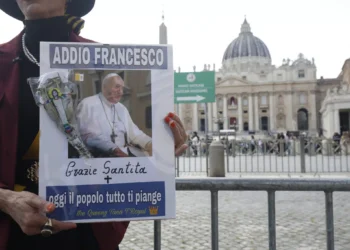Rome – The Argentine “Pope from the end of the world” has reigned for 12 years, since March 13, 2013. He overthrew the ecclesiastical pyramid, brought the peripheries to the center, opened many untrodden paths, and deviated from some paths. Indeed, it can be said that Pope Francis has been the most powerful environmental activist of our time. Starting with his choice of name, which already communicated a willingness to reform the Church, strip it down as much as possible, and ‘get out’ of Rome like the Saint of Assisi, who, with Sultan Malik al-Kāmil, began the Islamic-Christian dialogue. “How I would like a Church that is poor and for the poor! That’s why I call myself Francis, like Francis of Assisi,” he explained. “A Man of poverty, man of peace, and man who loves and cares for Creation.” In the last decade, Jorge Mario Bergoglio introduced ecocide as a crime against humanity and planned to introduce eco-penalty into the catechism of the Catholic Church. His is the first encyclical on care for Creation, followed eight years later by an ecological apostolic exhortation. His is the first synod for the Amazon.
His idea was to convene a summit of big oil companies at the Vatican with top executives from Eni, Chevron, Conoco, Exxon, BP, and Blackrock to reflect on the future of the Planet, in addition to meetings with Greta Thunberg and Bono Vox. If Francis is the Pope of ‘firsts,’ many — indeed, many of them — involved the environment. It surprised no one when he announced an environmental encyclical in 2015. In the letter, published on May 24, Francis highlighted how climate change constitutes one of the primary challenges for humanity, spoke of the need to change lifestyles without giving in to the technocratic paradigm, called for drinking water to be considered a common good and an inalienable right for all. He called for urgent policies to limit carbon dioxide emissions and other highly polluting gases and to develop energy from renewable sources instead. Five years later, a pan-Amazonian synod in Rome, whose work is summarized in the apostolic exhortation Querida Amazonia. Here, Bergoglio brings back dreams and hopes for the world’s green lung, where “social, cultural, and natural ecology come together as one.”
It is the perfect example of his integral ecology.
In 2018, he summoned the biggest oil companies between the Leonine Walls to talk about climate impact, the role of renewables, and risks related to ecosystem changes. His cry in defense of the environment also went up from the UN Headquarters: “The ecological crisis, together with the destruction of a large part of biodiversity, may endanger the very existence of the human species,” he warned, denouncing the “baneful consequences of an irresponsible mismanagement of the global economy, guided solely by the ambition for wealth and power,” which impose, he said, “a forthright reflection on man.”
On October 4, 2023, on St. Francis Day, the follow-up to Laudato Si came: the exhortation ‘Praise God.’ An ‘update’ that became necessary because, he had explained, “as time goes by, I realize that we are not reacting enough, as the world that welcomes us is crumbling and perhaps approaching a breaking point.” The specter of a breaking point turns up several times in the 73 points of the exhortation. Repeatedly, there is the certainty that this climate crisis affects everyone equally, starting with the most vulnerable. Again, the denunciation of the irresponsibility of deniers, even within the Church. In these dark years for Europe and the world, on several occasions, Francis has returned to appeal against the “madness of war” that can lead to a new nuclear catastrophe. The use of nuclear weapons, as well as their mere possession, he warned, is “immoral.”
Disarmament is a “challenging and far-sighted goal” for the Pope, especially when humanity is at a “crossroads.” Immediately after his election to the Conclave, again for the first time in history, before presenting himself at the Loggia of St. Peter’s, Bergoglio prayed in the Pauline Chapel, the starting point of the cardinals’ procession to the cloistered Sistine Chapel. A solitary prayer, like that of St. Francis at the Crucifix of San Damiano. In choosing his name and mission, he must have thought of the words the saint revealed he had heard from above, “Francis, go and repair my House.”
English version by the Translation Service of Withub







